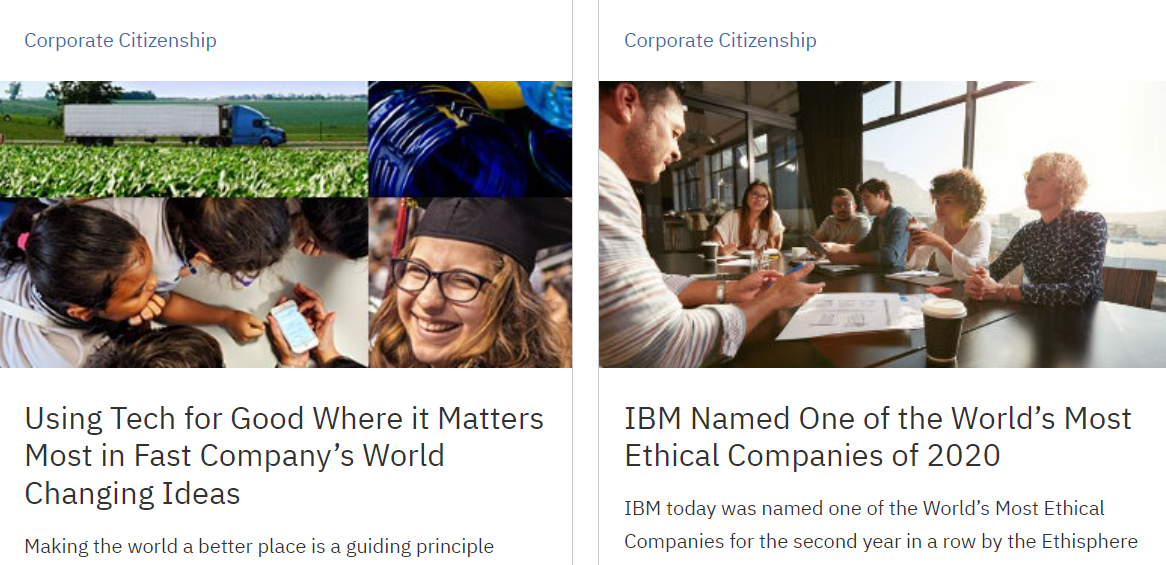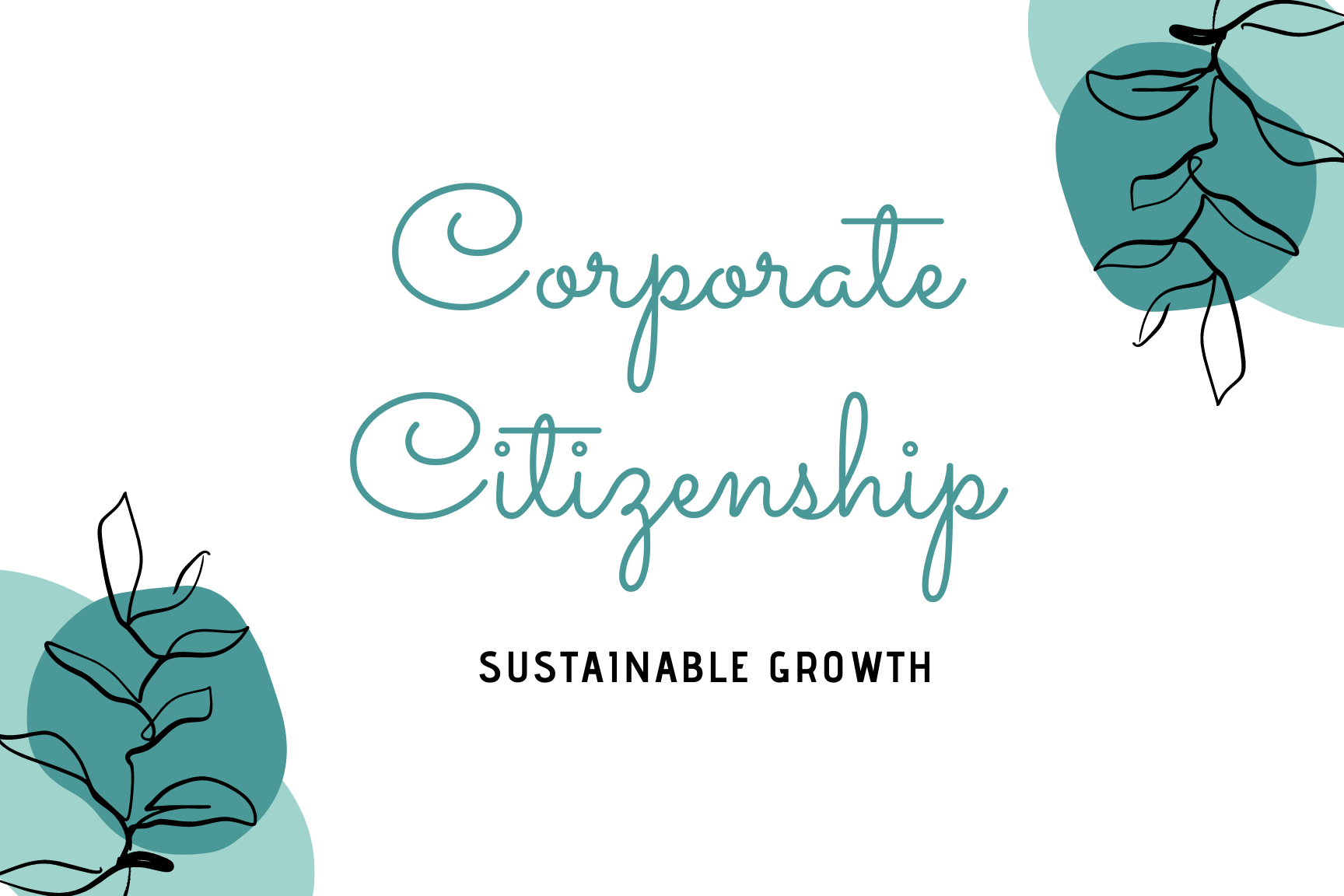Corporate Citizenship - Meaning, Stages and Examples
Explore the concept of Corporate Citizenship with real-world examples and how tools like TMetric can enhance employee wellbeing and contribute to a company's societal responsibilities

Corporate citizenship is like the heartbeat of a company, fueling its vitality and connecting it to the wider community.
Championing new technologies to foster new ways of productivity across all levels of business operations brings the concept of corporate citizenship to the forefront of management.
Understanding Corporate Citizenship
Corporate citizenship, or corporate social responsibility (CSR), has emerged as a powerful tool for promoting responsible leadership during tumultuous times.
Indeed, in today's highly connected environment, lots of companies show that they are willing to focus not only on financial performance but on striving to excel in a positive contribution to society and support sustainable practices.
Maintaining this trend requires:
❗going beyond traditional approaches to CSR that treat philanthropy as simply a PR stunt or marketing tactic
❗embarking on a genuinely transformative journey toward corporate stewardship.
By embracing CSR initiatives, companies can:
- showcase their dedication to ethical business practices
- contribute positively to society while navigating uncertainties and challenges.

What Is Corporate Citizenship In Business
Corporate citizenship refers to how a business employs its entitlements, duties, advantages, and comprehensive corporate accountability within our localized and worldwide settings.
It is becoming increasingly important because corporate citizenship plays a crucial role in shaping the positive public perception of a company like it was, for example, demonstrated by Patagonia campaigns.
Overall, companies that adhere to their corporate citizenship responsibilities observe a rise in workplace productivity, contentment, and team spirit.
It elucidates why entities and individual investors alike pursue firms that have a socially responsible focus, including their adherence to environmental, social, and governance (ESG) norms.
Corporate citizenship seeks to enhance the living standards and quality of life in neighboring communities, all while upholding profitability for stakeholders.
Thus, the essential purpose of corporate citizenship is to forge a more favorable environment for conducting business and, more broadly, a better world overall.
The Five Stages of Corporate Social Responsibility and the Path to Responsible Leadership
Companies progress through five stages in their corporate social responsibility (CSR) journey, starting from basic compliance practices and moving towards fully integrating CSR into core business strategies.
This progression involves increasing engagement with key stakeholders like governments, civil society organizations, and investors to drive systemic change within industries.
By transitioning from reactive measures to proactive strategies, companies adopt an encompassing approach called ESG+D (Environmental, Social, Governance, plus Development), dedicating more resources to stakeholder collaboration and becoming recognized leaders in addressing global challenges.
These transformative stages reshape capitalism and provide a framework for responsible enterprises to meet tomorrow's multidimensional challenges today.
Examples of Companies with Strong Corporate Citizenship Practices

According to sources and studies, there are some noteworthy examples of companies that choose to be good corporate citizens.
Patagonia

Embodied by their unwavering commitment to both environmental sustainability and ethical labor practices, Patagonia stands tall as a shining example of conscious corporate activism.

Delving into the realm of bold clean energy investments, Google has emerged as a trailblazer, proudly maintaining carbon neutrality since 2007.
Coca-Cola

With an impressive reputation in the realms of water stewardship, sustainable agriculture, and women's empowerment, Coca-Cola has carved its name as a leader in fostering positive change.
Microsoft

Spearheading the charge towards carbon neutrality, Microsoft has demonstrated its determination to invest in renewable energy sources to propel the shift toward a greener future.
IBM

In pursuit of a sustainable future, IBM has made an indomitable commitment to environmental responsibility, fueling its aspirations to achieve tangible progress in minimizing its ecological footprint.
TOMS Shoes

It is a one-of-a-kind footwear brand that makes the world a better place with each purchase made! Not only do they offer high-quality shoes for men, women, and kids, but their innovative 'One for One' concept ensures that a person in need is provided with shoes for every purchased pair.
The Body Shop

Celebrated for their unwavering commitment to ethical sourcing and environmental sustainability, The Body Shop stands as an influential force in fostering a better, more conscious world.
The Bottom Line: By embracing sustainable development principles, as introduced by the examples above, companies demonstrate that they can create shared value for society and their business.
Corporate Citizenship Strategies for Success

For successful strategic planning, it is important to identify key areas of focus that include:
- education
- sustainability
- community development.
Strategy #1: Align your corporate citizenship strategies with business core values and goals

Why this strategy works: By prioritizing strategies that positively impact both stakeholders and the world, firms can secure enduring prosperity for all.
Corporate citizenship strategies may vary across:
- industries
- company sizes
- geographical locations.
It means that companies often tailor their strategies to align with their business goals, values, and the needs of their stakeholders and communities.
The best way to do it: To start, companies can use the ISO guidelines on Corporate Social Responsibility (CSR), which provide advice on how businesses can incorporate ethical practices into their operations while maintaining profitability.
These voluntary standards aim to promote sustainability and responsible behavior within the global marketplace through transparent communication with stakeholders.
To drive sustainable success, companies must proactively tackle the critical challenges facing their sector and society at large.
In its turn, it requires that companies establish:
- clear objectives for implementing corporate citizenship initiatives
- metrics to measure the success of their corporate citizenship programs.
Now, you are ready to fully integrate corporate citizenship activities into the company's regular operations.
Strategy #2: Collaborate with external partners, such as nonprofits or government agencies

Why this strategy works: Engaging employees through volunteer programs or donation matching can boost participation and amplify the impact of corporate citizenship initiatives.
Collaboration and partnerships with external organizations can expand the reach of corporate citizenship efforts.
The best way to do it: To truly make a difference through corporate citizenship strategies, companies must collaborate beyond their own walls and seek out partnerships with other organizations that share similar values and goals.
Collaborating with other organizations, governments, NGOs, and industry peers implies the sharing of resources, expertise, and networks to tackle complex societal and environmental challenges.
Companies may also:
- provide paid volunteer hours and employee volunteering grants
- organize volunteer events
- establish employee-driven initiatives to contribute to local communities.
Strategy #3: Create Sustainable Supply Chain Management

Why this strategy works: Ensuring sustainability across the supply chain is another key strategy.
This involves:
- working with suppliers to improve environmental and social practices,
- promoting responsible sourcing
- supporting fair trade principles.
The best way to do it: Conduct a life cycle assessment (LCA) of your product to identify environmental impacts at each stage of the supply chain, including everything from raw material extraction to end-of-life disposal.
Implement green procurement policies to ensure that suppliers align with your company’s sustainability goals. Select suppliers based on their own sustainability performance.
Encourage collaboration among stakeholders throughout the supply chain by creating transparency around practices such as:
- energy usage
- waste reduction efforts
- water conservation initiatives.
Create programs for employees to improve sustainability literacy.
Engage customers through targeted campaigns promoting eco-friendly products and behavior.
Strategy #4: Provide Responsible Marketing and Consumer Education

Why this strategy works: Companies can adopt socially responsible marketing practices by promoting accurate information, avoiding deceptive advertising, and educating consumers about social and environmental issues. This includes providing clear product labeling and information on sustainable practices.
The best way to do it: Provide truthful and comprehensive information without exaggeration, emphasize fair and balanced presentation of product attributes, including potential drawbacks/risks, and disclose any limitations or possible side effects fully and conspicuously.
Invest resources into educating customers towards sustainable decision making and inform them about relevant topics connected to available offerings. This will help shape society’s values while strengthening relationships with stakeholders.
Ultimately, such an approach converts environmentally conscious audiences into supporters of your business:
44% of those recommending environmental, social, and governance (ESG) products are superpromoters, meaning they recommend the product to more than 10 people...
Strategy #5: Develop Ethical Labor Practices

Why this strategy works: By establishing ethical standards within the corporate structure, you can reinforce your corporate purpose.
The best way to do it: Developing an actionable plan concerning ethical labor practices is a sure way to be recognized as a workplace where workers are not mistreated when it comes to:
- fair wages
- safe working conditions
- compliance with labor laws.
Also, businesses can encourage workforce development initiatives that include training, skill development, and apprenticeships to bridge the gap between education and employment.
Strategy #6: Use Time Tracking to Enhance Corporate Citizenship

Why this strategy works: Time tracking proves to be a valuable tool for companies looking to enhance their corporate citizenship efforts because it removes second-guessing from decision making process.
By accurately measuring and analyzing employee engagement in corporate citizenship activities, companies can gain valuable insights into the effectiveness of their initiatives.
The best way to do it: Apply time tracking to optimize resource allocation to maximize the impact of corporate citizenship initiatives, – it can also help in planning and optimizing future programs.
Use time tracking data to identify areas where corporate citizenship efforts may be falling short and make necessary adjustments to enhance their impact.
Besides, using time tracking can improve accountability – use it to communicate the impact of corporate citizenship efforts to stakeholders. In particular, by showcasing the time spent on these initiatives, companies can demonstrate their commitment to corporate citizenship and enhance stakeholder trust.
Strategy #7: Regularly review and update corporate citizenship plans

Why this strategy works: A key aspect of maintaining effective ESG management frameworks entails continuous evaluation of established strategies through input collected from company personnel as well as external parties such as stockholders and members of the local community.
The best way to do it: Periodically examining and amending sustainability roadmaps can facilitate more successful outcomes for everyone involved.
Obtaining perspectives via questionnaires, group sessions, or individual conversations can aid the detection of unaddressed considerations or rising concerns necessitating modifications to guidelines.
Comparing performance levels against industry competitors is another means of periodically assessing and updating corporate citizenship strategies.
Companies can also engage external experts, consultants, or sustainability professionals to gain an objective perspective on their corporate citizenship plans.
Measuring the Impact of Corporate Citizenship
Companies can use various metrics to measure the success of their corporate citizenship efforts and demonstrate the value they bring to society:
- Employee volunteer hours: Tracking the number of hours employees devote to volunteer activities can provide insights into their engagement level and the reach of corporate citizenship initiatives.
- Carbon footprint reduction: Measuring and reducing the company's carbon emissions helps assess its environmental impact and commitment to sustainability.
- Community impact: Assessing the positive change the company's initiatives have on local communities can help evaluate the social value created.
Data tracking and analysis play a crucial role in measuring the impact of corporate citizenship. By collecting and analyzing this data, companies can identify the effectiveness of different initiatives and make informed decisions about future actions.
How TMetric Сan Support Corporate Citizenship

TMetric, a time tracking and productivity tool, provides essential support to companies in their pursuit of corporate citizenship.
By accurately tracking employee time and project progress, TMetric enables businesses to ensure efficient resource allocation and productivity, which allows companies to optimize their operations and reduce waste, contributing to environmental sustainability.
Besides, TMetric's reporting capabilities enable companies to monitor and measure the impact of their corporate social responsibility (CSR) initiatives. Organizations can track the time to get valuable data to enhance transparency and accountability when participating in:
- volunteer projects
- charity work
- community engagement efforts.
Social project tracking enables easy recording of time spent by team members on community initiatives, promoting a sense of shared responsibility towards society and enhancing employee motivation.
Conclusion

The importance of corporate citizenship lies in its ability to promote favorable social and environmental impact while also bolstering the credibility and sustainability of businesses.
On a practical level, corporate citizenship implies that a company claims to contribute to the well-being of society and the environment through:
- legal, ethical, and economic responsibilities
- well-planned actions.
Corporate citizenship provides numerous benefits for both society and companies, including positive societal influence, improved brand image, and long-term sustainability.
Forward-thinking organizations are recognizing that responsible corporate behavior is essential to driving innovation and creating positive change within our communities and the natural world.


